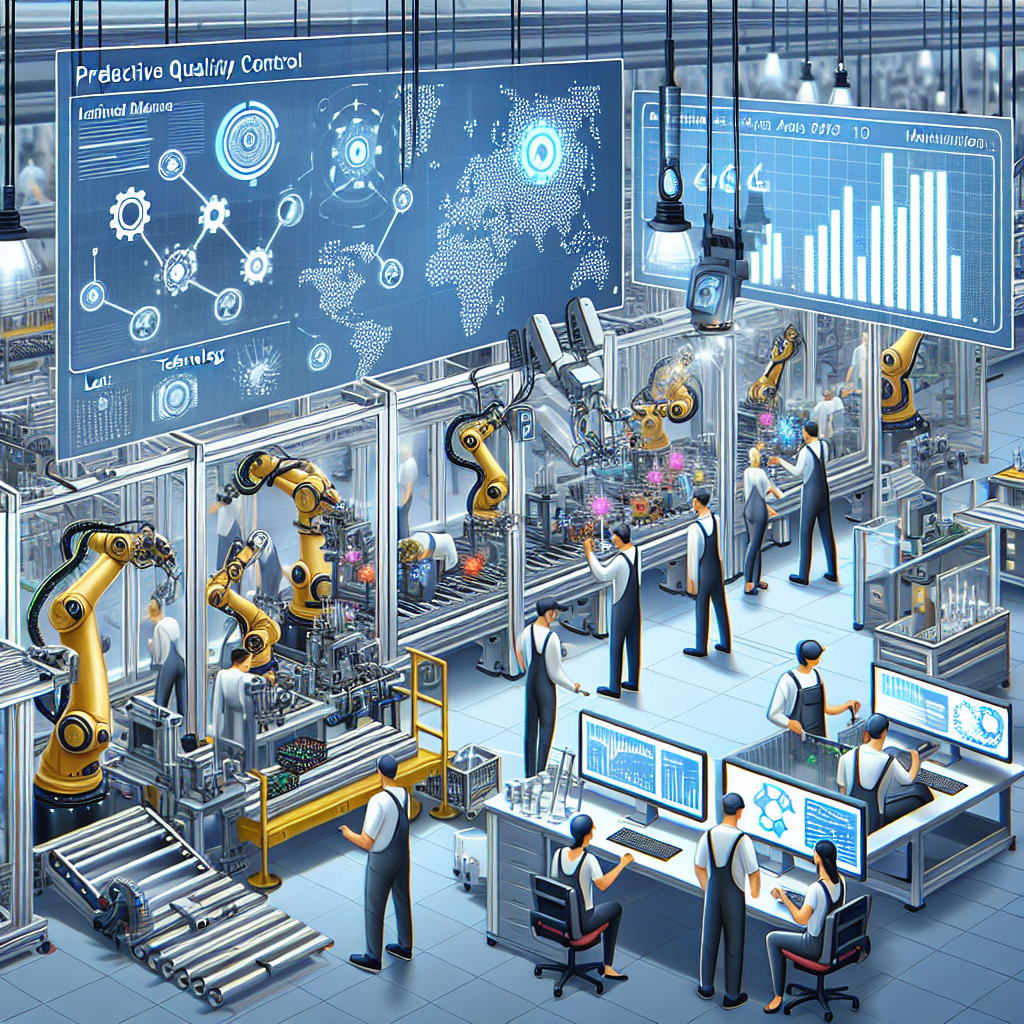Artificial Intelligence (AI) has revolutionized many industries, and manufacturing is no exception. Predictive quality control, a subset of AI, is becoming increasingly important in manufacturing to ensure products meet high standards and reduce defects. In this article, we will explore the role of AI in predictive quality control in manufacturing, its benefits, challenges, and the future outlook.
What is Predictive Quality Control?
Predictive quality control is a method of quality assurance that uses AI algorithms and machine learning to predict and prevent defects in manufacturing processes. By analyzing data from various sources such as sensors, cameras, and historical production data, AI can identify patterns and anomalies that may indicate potential quality issues.
The goal of predictive quality control is to anticipate defects before they occur, allowing manufacturers to take proactive measures to prevent them. This not only improves product quality but also reduces waste, rework, and costs associated with defects.
How Does AI Improve Predictive Quality Control?
AI algorithms can analyze large volumes of data in real-time, enabling manufacturers to detect potential quality issues early on. By identifying patterns and trends in data, AI can predict when a machine is likely to fail or when a product is likely to be defective.
AI can also help optimize production processes by identifying factors that contribute to defects and recommending changes to improve quality. For example, AI can analyze machine performance data to identify the optimal settings for production or recommend changes to the production line layout to reduce defects.
Benefits of Predictive Quality Control in Manufacturing
There are several benefits of implementing predictive quality control in manufacturing:
1. Improved Product Quality: By predicting and preventing defects, manufacturers can produce higher quality products that meet customer expectations.
2. Reduced Costs: By preventing defects before they occur, manufacturers can reduce waste, rework, and costs associated with defects.
3. Increased Efficiency: AI can optimize production processes and identify areas for improvement, leading to increased efficiency and productivity.
4. Enhanced Customer Satisfaction: By delivering high-quality products consistently, manufacturers can improve customer satisfaction and loyalty.
Challenges of Implementing Predictive Quality Control
While the benefits of predictive quality control are significant, there are also challenges to implementing AI in manufacturing:
1. Data Quality: AI algorithms rely on high-quality data to make accurate predictions. Ensuring data accuracy, consistency, and completeness can be a challenge for manufacturers.
2. Integration: Integrating AI algorithms with existing manufacturing systems and processes can be complex and time-consuming.
3. Skills Gap: Implementing AI requires specialized skills and expertise that may not be readily available within the organization.
4. Cost: Implementing AI in manufacturing can be expensive, requiring investments in technology, training, and infrastructure.
Future Outlook of AI in Predictive Quality Control
Despite the challenges, the future outlook of AI in predictive quality control is promising. As AI technology continues to advance, manufacturers can expect to see further improvements in quality, efficiency, and productivity.
Some trends to watch in the future of AI in predictive quality control include:
1. Automation: AI algorithms will become more autonomous and self-learning, enabling real-time decision-making and adaptive control in manufacturing processes.
2. Integration with IoT: AI will be increasingly integrated with the Internet of Things (IoT) to enable seamless communication between machines, sensors, and production systems.
3. Predictive Maintenance: AI algorithms will be used to predict equipment failures and recommend maintenance actions to prevent downtime and improve reliability.
4. Customization: AI algorithms will enable manufacturers to personalize products and production processes to meet individual customer needs and preferences.
FAQs
Q: How can manufacturers get started with predictive quality control using AI?
A: Manufacturers can start by identifying their quality goals and challenges, assessing their data infrastructure and capabilities, and working with AI experts to develop a predictive quality control strategy.
Q: What types of data are used in predictive quality control?
A: Manufacturers can use various types of data, including production data, sensor data, image data, and historical quality inspection data, to train AI algorithms for predictive quality control.
Q: What are some common AI algorithms used in predictive quality control?
A: Common AI algorithms used in predictive quality control include neural networks, decision trees, support vector machines, and random forests.
Q: How can manufacturers measure the success of predictive quality control initiatives?
A: Manufacturers can measure the success of predictive quality control initiatives by tracking key performance indicators such as defect rates, rework costs, customer satisfaction scores, and production efficiency.
In conclusion, AI is transforming predictive quality control in manufacturing by enabling manufacturers to predict and prevent defects, improve product quality, and reduce costs. While there are challenges to implementing AI in manufacturing, the benefits are significant, and the future outlook is promising. By leveraging AI technology and expertise, manufacturers can stay ahead of the competition and deliver high-quality products that meet customer expectations.

